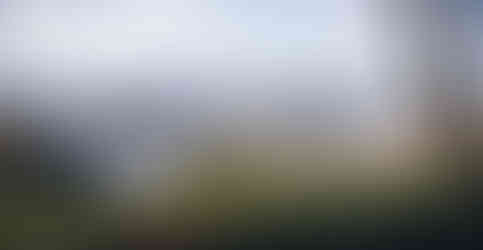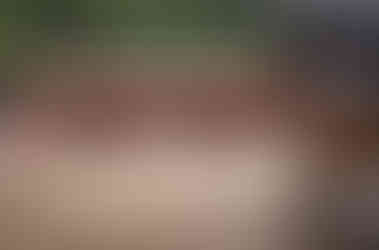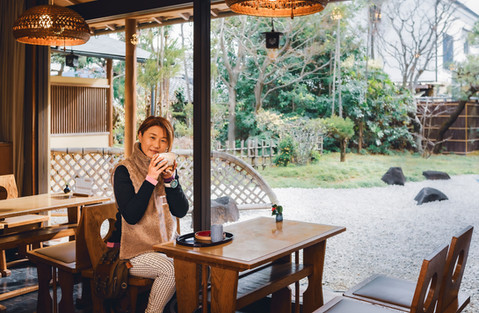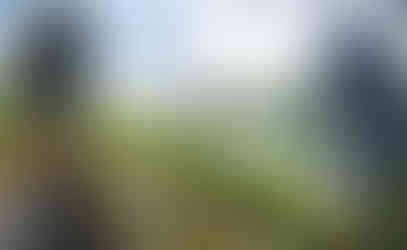Yamanobe-no-Michi | A Walk Through Time on Japan's Oldest Road
- NVC

- Apr 16, 2024
- 19 min read
Updated: Aug 18, 2025
The Yamanobe-no-Michi is part of Shinkaido, the most ancient road in Japan. It is a unique opportunity to experience the harmonious blend of Japan's rich history and vibrant present all enveloped in a hiking trail of 4 to 5 hours suitable for all levels. The most popular stretch of the road runs between Isonokami-jingu Shrine in Tenri City and Omiwa-jinja Shrine in Sakurai City, but we will also introduce you to a few charming sites along the path further north in Nara city.

The Yamanobe-no-Michi is mentioned in the Nihon Shoki (The Chronicle of Japan) meaning it dates back to at least the 8th century. The road originally meandered around wetlands, forest and settlements, but as these disappeared over time, the road straightened out and evolved to match its surroundings.
As you walk, the past seamlessly blends with the present. You might find yourself strolling past a traditional wooden farmhouse, then an ancient tomb of a past grand Emperor, only to turn a corner and find yourself face-to-face with a modern convenience store, offering a welcome respite and a refreshing drink. This seamless integration is a testament to Japan's unique ability to honor its history while embracing modernity.
In this article we won't stay strictly along the trail, but wander just a little off it to introduce a few alternative places to visit, as well as some of the more famous stops along the way.
Here's a quick overview-map of the places we visited along the trail. As always, if you have any specific questions about the Yamanobe-no-Michi, or for that matter anything related to tourism in Nara, feel free to drop us a line at info@sarusawa.nara.jp
Index
Shin Yakushi-ji Temple | Byakugo-ji Temple | Tenrikyo Church Headquarters | Tenri University Sankokan Museum | Isonokami-jinja Shrine | Chogaku-ji Temple | Mausoleum of Emperor Sujin | Tenri Trail Center | Kurozuka Tumulus Museum | Miwa Nagashi Somen | Omiwa-jinja Shrine | Shiratamaya Eiju | Imanishi Sake Brewery | Magic x Mallet | Shorin-ji Temple
Shin-Yakushi-ji Temple
The Nara city part of the trail runs right past Shin Yakushi-ji Temple. Founded in 747 by Empress Komyo for the ailing Emperor Shomu, the temple's original grandeur has given way to a more intimate presence. Only the main hall remains of the original structures from the 8th century, but what lies within is a breathtaking Buddhist sculpture.
The entirety of the hall is almost taken up by a circular plinth measuring 9m in diameter and 90cm in height. At the center is the principal image of Shin Yakushi-ji Temple, a magnificent 191.5cm early Heian period seated Yakushi Nyorai. On the outskirts of the plinth facing outwards and encircling the Yakushi Nyorai are the Twelve Heavenly Generals. They range in height from 153cm to 170cm and serve as protectors.
Dating back to the Nara period, the standing group of Generals is the oldest extant in Japan. 11 of the 12 are designated as National Treasures, one being excluded on account of it being replaced in 1931 after the original was damaged in an earthquake over 150 years ago.
The Temple Bell
The temple bell, designated as an Important Cultural Property, originates from Gango-ji Temple's belfry during the Nara period. Its significance lies in the tale of an Oni, (demon, ogre, or troll in Japanese folklore) as recounted in the Nihon Ryoiki. During the Asuka period, an Oni named Gagoze was killing the attendants from Gango-ji's belfry during the night. At that time there was a child acolyte at the temple who had extraordinary strength. This strength was bestowed upon him as a result of his father sparing the life of a raijin lightning spirit that had fallen from the sky. The child decides to confront the Oni. In a dawn encounter, the child seizes the Oni by the hair, dragging it around and causing the Oni to flee after losing all his hair.
The child, later becoming the monk Dojo Hoshi, witnesses the bell's transfer to Shin Yakushi-ji after Gango-ji's belfry burns down. The visible scratches on the bell are said to have been caused by the Oni's fingernails. The hair of the defeated Oni was kept as a treasure of Ganjo-ji Temple and is passed down still to this day.
Access:
Address: 1352 Takabatake-cho, Nara, 630-8301
Phone: 0742-223-736
Hours: 9:00 - 17:00
Admission: Free
Main Hall: Adults: ¥600
Children: ¥150
Byakugo-ji Temple
There are few written explanations of the Buddha's actual physical appearance and no extant
representations in artistic form until roughly the 2nd century CE. However, the Buddha was said to have displayed the 32 signs of a great man, with number 31 being:
uṇṇā ... bhamukantare jātā odātā mudutūlasannibhā...
the tuft of hair between the eyebrows on his forehead is very white like cotton.
The uṇṇā, or byakugo in Japanese, is from which this peaceful temple located above the gentile slopes of the western foothills of Mount Takamado derives its name.
This was once the location of the luxurious residence of Prince Shiki, (posthumously known as Emperor Kasuga) the 7th son of Emperor Tenji. He spent a life devoted to the arts and 6 of his poems were included in the Man'yoshu, the oldest extant collection of Japanese waka poetry compiled during the Nara period. After his death, the temple we are enjoying today was established, although the exact date remains unknown.
Byakugo-ji Temple is known for its serene atmosphere, delightful bush clovers in autumn and its fabulous views overlooking Nara city. You can clearly see the 5-story pagoda of Kohfuku-ji Temple and if you can just stretch your neck past some large trees, the golden rooftop shibi of Todai-ji Temple.
The following is a poem composed by Prince Shiki upon visiting Naniwa Palace (706)
Ashibe yuku
Kamo no hagai ni
Shimi furite
Samuki yūbe wa
Yamato shi omōyu
In among the reeds
Go to mallards through the frost
Falling on their wings:
Cold twilight, the still hour
Of longing for Yamato.
Access:
Address: 392 Byakugojicho, Nara, 630-8302
Phone: 0742-263-392
Hours: 9:00-17:00
Admission: Adults ¥500 | Jnr & High School ¥300 | Primary School: ¥ 200
Tenrikyo Church Headquarters
Tenrikyo is a religion originating from the teachings of a 19th-century woman named Nakayama Miki, known to her followers as "Oyasama". Followers of Tenrikyo believe that God revealed divine intent through Miki Nakayama as the Shrine of God.

A central teaching of Tenrikyo is the concept of the Joyous Life. Followers believe that "God the Parent" created human beings to take delight in seeing them live the Joyous Life which is defined as a state of perfect bliss which is cultivated through acts of charity and mindfulness called hinokishin. Tenrikyo's worldly aim is to teach and promote the Joyous Life to all people.
The primary operations of Tenrikyo today are located at Tenrikyo Church Headquarters in Tenri City. The church welcomes visitors and newcomers and will happily assist you and answer any questions you may have about the religion. They do not however regard their church as a tourist attraction and as such, filming or photography of any kind is not permitted inside the church. The headquarters supports over 16,000 locally managed churches in Japan, with an estimated following of 1.75 million and over 2 million worldwide.
Access:
Address: 1-1 Mishimacho, Tenri, Nara 632-0015
Phone: 0743-63-1511
Hours: 24hrs
Admission: Free
Tenri University Sankokan Museum
The Tenri University Sankokan Museum was established as “The Overseas Reference Materials Room” in 1930 to “broaden knowledge of the lifestyles and histories of people from various regions of the world” by collecting, preserving and displaying ethnographical, archeological and transportation related artifacts.
The museum’s permanent exhibition is spread across 3 floors and 3,000 items from the museum’s extensive collection (approx. 300,000 artifacts) are on display. Seasonal and special exhibitions are held 3-4 times a year, including workshop, museum concerts and lectures. The Tenri University Sankokan Museum is located a 20-minute walk to the southeast of Tenri Station. It’s open from 9:30am-4:30pm Wednesday-Monday. The museum is closed on Tuesdays. Admission is ¥500 for adults (high school students and up), and ¥200 for elementary and junior high school students.
*Photography and filming at Tenri Sankokan is usually prohibited. We would like to thank the museum for allowing us to film inside in order to compile this blog and accompanying video.
Access:
Address: 250 Morimedo, Tenri, Nara 632-8540
Phone: 0743-63-8414
Fax: 0743-63-7721
Hours: 9:30-16:30 (Last Entry at 16:00)
The museum stays open every day during the following periods: April 17-19, July 26-August 2, January 5-7 and the 25th-26th of every month.] April 28 (Anniversary of the Museum’s Founding) August 13-17 (Summer Closure) December 27-January 4 (Year-End & New Year’s Season)
Closed: Tuesday (When a national holiday falls on Tuesday, the museum closes on Wednesday instead.)
Admission: ¥500 for adults (high school students and up), and ¥300 for elementary and junior.
Isonokami-jingu Shrine
Despite its historical importance and undeniable beauty, visitors to Isonakami-jingu Shrine will be forgiven for remembering it as "the chicken shrine." As you approach the torii gate entrance, the sound of clucking chickens gradually begins to fill the air, almost like a welcoming fanfare. Much like the deer of Nara park, the chickens at Isonokami-jingu Shrine are revered as messengers of the gods. The chickens are given free-range in the morning and return to their coups in the afternoon, which is when we visited.
Located at one end of the southern stretch of the Yamanobe-no-Michi, the shrine is regarded to be one of the oldest extant shrines in Japan. Having played a pivotal role in the nation's early history, especially during the 3rd to 5th centuries, legend has it that the temple was built in 91 BC during Emperor Sujin’s reign (Sujin being widely thought of as a partly legendary figure. ) It is unknown which deity (Kami) was originally worshipped here but the shrine is known for having been used as a weapons storehouse and some historically important artifacts are still stored here.
One of the most significant is a 7 branched sword known as the Nanatsusaya-no-Tachi or Shichishito. This sword was a symbol of the relationship at the time between Japan and the kingdoms of the Korean Peninsula. Gifted to the King of Yamato by the Crown Prince of Baekje, a kingdom on the Korean Peninsula. For many years, there was no inner shrine here, an excavation was carried out in 1874, and uncovered an actual sword. The shrine where the sword currently rests is now treated as the inner shrine.
Access:
Address: 384 Furucho, Tenri City, Nara Prefecture
Hours: 5:30 - 17:30 (Sunrise / sunset)
Admission: Free
Chogaku-ji Temple
Chogaku-ji Temple is said to have been founded by Kukai, the monk who also founded Koya-san. It is a popular detour on the Yamanobe-no-Michi trail especially during spring and autumn as the grounds are full of beautiful seasonal flowers. In fact, Chogaku-ji is the nineteenth of the twenty-five Kansai flower temples as well as being the 4th of the 13 Buddhist sites of Yamato.
The temple's bell tower gate is the oldest in Japan and is the only building that remains of the originals. It was designated as a national important cultural property in 1907. The main hall has a masterpiece painting by the 16th Century artist Kano Sanraku depicting hell which is only on display from October 23rd to November 30th.
Access:
Address: 508 Yanagimotocho, Tenri, Nara 632-0052
Tel: 0743-661-051
Hours: 9:00 - 17:00
Admission: Free
Tenri Trail Center
A popular stop along the Yamanobe-no-Michi is the Tenri City Trail Center, located adjacent to Chogaku-ji Temple. The Trail Center is very similar to a "michi-no-eki," a kind of one stop facility for travelers in rural areas which offers amenities, a place to eat and purchase local produce, arts and crafts.
What stands this center apart is the restaurant found inside, namely "Yoshoku Katsui" as featured in the 2022 Michelin Guide:
"There is tranquil scenery outside and the terrace seating is pleasant. Seafood, caught that day, comes from Izumisano fishing port. Fried shrimp of the season, such as greasyback shrimp, Japanese tiger prawn and green tiger prawn, is the speciality. Local bounty comes in the form of fresh vegetables and Hinohikari rice from nearby farmers."
The trail center is a great place to stop off, refuel, purchase some local souvenirs and bask in the warmth of the local people.
Address: 577-1 Yanagimoto-cho, Tenri, Nara, 632-0052
Phone: 0743-67-3838
Hours:
Breakfast: (Tue-Sun) 8:30〜10:00
Lunch & Cafe: (Tue-Sun) 11:00-16:30
※Mon: Chef's Lunch of the Day (11:00-14:00)
Dinner: (Thurs-Sun & Hols) 17:00-21:00 (LO. 20:30)
Closed: First Monday of every month
The Tomb of Emperor Sujin
The tomb of the 10th emperor, Emperor Suijn, who is said to be the founder of the Yamato court, is designated as the tomb of "Yamabe-no-michi Magari-no-oka no Ue no Misasagi" and is managed by the Imperial Household Agency. It is also called "Andonyama Tumulus" after the name of the region. It is just a 5-minute walk from the Tenri Trail Center but is a popular rest spot in its own right thanks to its beautiful greenery around the moat and the nice views it provides.
Who was Emperor Sujin?
Emperor Sujin (148 B.C. - January 9, 29 B.C.) served as the tenth emperor of Japan from February 17, 97 B.C. to January 9, 29 B.C., as documented in "Kojiki" and "Nihon Shoki." Posthumously named Mimakiiribikoinie no Sumera no Mikoto or Hatsukunishirasu Sumera Mikoto, he is also known as Mimakiirihikoinie. Modern scholars consider him the first emperor with possible historical existence.
Doubts persist regarding the historical accuracy of his exploits and genealogical connections to the Kesshi-Hachidai (eight undocumented emperors). Despite this, some view him as the Yamato Sovereignty figure from the third to the early fourth century. Other theories suggest that Emperor Sujin was in fact Japan's first emperor or the same as Emperor Jinmu. The Kojiki credits Emperor Sujin with unifying the country, fostering peace and prosperity, earning him praise as Mimakono Sumera Mikoto. Additionally, he is said to have contributed to the development of agriculture and overseen the construction of ponds in Osaka and Nara.
The Andonyama Tumulus is a huge keyhole-shaped tomb, the 16th largest of its kind in Japan and is estimated to have been built in the late 4th century. The tomb is 242 meters long, 158 meters in diameter, and 31 meters high at the rear mound. The front mound is 100 meters wide and 13.6 meters high. The moat surrounding the tomb is 360 meters long and 230 meters wide.
Details of the burial chamber are unknown, but old drawings suggest that the excavation site on the top of the rear mound was in fact a robbery. Artifacts later excavated from the moat include copper plates, gold and silver jewelry, and pottery.
Access:
Address: Yanagimoto-cho, Tenri, Nara 632-0052
Phone: 0743-63-1242
Hours: 24hrs
Admission: Free
The tomb can be accessed directly from Yanagimoto Station on the JR line (600m) and lies next to National Route 169.
Kurozuka Tumulus Museum
Kurozuka Tumulus Museum is an exhibition and information facility for the Kurozuka Tumulus, a National Historic Site. It is located in Yanagimoto-cho, Tenri city, across the road from The Tomb of Emperor Sujin.
This kofun, or tumulus is an early keyhole-shaped mound dating back to around the end of the third century. In the late 1990s, excavation research discovered 33 Sankakubuchi Shinju-kyo Mirrors and one Gamontai Shinju-kyo Mirror (Mirror with figures of deities and sacred animals) in almost the same state when they were buried. A miraculous find which made headline news across Japan. The tumulus is now named Yanagimoto Park and beside it sits Kurozuka Tumulus Museum to exhibit a full-size model of the stone pit burial chamber.
On January 29, 2001, it was designated as a national historic site.

In the coffin the Gamontai Shinju-kyo Mirror was placed near the head of the deceased person and one katana (one-edged sword) and one tsurugi (two-edged sword) on either side of it, and in the outside of the coffin 15 Sankakubuchi Shinju-kyo Mirrors on the east wall and 17 on the west wall, which faced inward, were placed in the small space between the coffin and the wall.
Swords, tetsuzoku (iron arrowheads), and kozane (small piece of iron or leather for armor) and unspecified iron goods were arranged. The burial area of the back circular part include a pit stone chamber with its inside measurement approximately 8.3 meters in length, a north-facing small entrance 0.9 meters in width and about 1.7 meters in height and wooden beams combined to form a steep thatched roof and corbelled out with flagstones from Mt. Kasuga and Mt. Shiba.
In the stone chamber a hollowed-out wooden coffin was placed on the clay floor. It seems that the center of the wooden coffin was painted with cinnabar and both ends painted in red colcotha (Jeweler's rouge). Moreover, this pit stone chamber points to almost true north, from which we can guess that the head of the deceased pointed to true north. It is thought that in the Yamato Dynasty there was a custom of burying the deceased with his or her head pointing to true north.
Access:
Address: 1118-2 Yanagimoto-cho, Tenri, Nara 632-0052
Phone: 0743-673-210
Hours: 9:00 - 17:00
Closed: Monday
Admission: Free
Miwa Somen Noodles Nagashi
Originating from Omiwa-jina Shrine, Japan's oldest shrine, Miwa Somen has a rich history dating back around 1200 years, preceding the introduction of ramen and udon. Initially created to alleviate hunger in the town, over the years, technological advancements, including the introduction of a grinder, have enhanced the production process, resulting in thinner and longer noodles. Renowned for its high quality, Miwa Somen continues to be celebrated for its historical significance.
Typically served cold with "shoyu" and "dashi." Miwa Somen's distinguishing feature lies in the emphasis on thinness, with the highest grade measuring a mere 0.3 to 0.5mm in diameter. The noodles achieve optimal quality when allowed to dry for over two days, contributing to a firmer texture. Noodles that are stored for a longer period of time are considered high-class. The ideal ageing process is at least one full year. Older noodles are smoother and firmer which makes them high-grade as well.
The dipping sauce is usually a mix of soy sauce, fish broth, and a bit of sake, so it has a delightful savory flavor that goes perfectly with the fresh, cold noodles. You can also add scallions, ginger, wasabi or even shikuwasa citrus to change the taste.
Nagashi Somen
One of the most exciting variations is nagashi somen (nagashi meaning “flow” in Japanese.) Usually, niche restaurants serve it via a bamboo tube filled with cold water. This bamboo trough’s position is at an angle from high to low to create a flow. This allows the thin somen noodles to flow easily along the cool water. You must use your agile chopstick control skills and ingenuity to “catch” these noodles. Then, soak the noodles in a cold tsuyu broth and slurp them down. It's a fun family favorite all over the country during summer.
At Miwa Somen Nagashi you can enjoy nagashi somen all year round via a nifty table-top machine. Lunch options also include tempura, kettle rice and spare ribs sets, all of which are very popular. On weekends during the warmer months, you can expect to wait up to 1 hour just to get seated.
Access:
Address: 460-24 Miwa, Sakurai, Nara 633-0001
Phone: 080-3037-3838
Hours: 10:30-16:00
Closed: Thursday
Omiwa-jinja Shrine
Omiwa-jinja Shrine is arguably Japan's oldest shrine. Typically, shrines house a main hall, yet Omiwa predates this custom. Its principal object of worship is the mountain that lies behind it, namely Mt. Miwa and is revered through a rare triple torii gate (mitsu-torii) at the shrine's prayer hall. The mountain is also known as “Mimuro-yama,” meaning “sake’s origins.”

Protected by sacred status, Mount Miwa's untouched forests have endured for millennia. It is possible to ascend the mountain under certain conditions to maintain its sanctity, they are "no eating, drinking, photography, or mobile phone usage." Some worshippers, seeking connection, ascend barefoot. Foreign visitors can climb if accompanied by a Japanese guide or fluent in Japanese, and carrying a cell phone with regular Japanese service.
The shrine is also deeply intertwined with the history of sake brewing. In ancient history, Emperor Sujin received a divine message with instructions to stop an epidemic. Part of these instructions included making an offering of sacred sake. The epidemic was averted and the "Diety of Sake Brewing" was enshrined in the Ikuji auxiliary Shrine. Omiwa-jinja Shrine had the role of producing sacred wine for Shinto rituals for the Yamato Imperial Court. Sake offered to the gods was called miwa because of this. Nowadays, the sacred sake used in rituals is called miki.
Sugidama Cedar Ball
The cedar trees on Mt. Miwa were considered sacred trees, and there was a custom of stringing up bundles of their leaves and hanging them from the eaves of sake breweries. By the end of the Edo period they had changed into the ball-shaped sugidama we see today. The barrels in which sake was traditionally brewed were made of cedar and the tree's needle-like leaves were also soaked in the sake to prevent it from going bad.
A delicate balance of koji mold is required in the fermenting process and in the olden days, it was far from rare that a whole batch of sake became rotten because of a minor unnoticed deviation in the brewing process. Because of this, many rituals and superstitions developed around the brewing process to pray for a successful brew which included the use of cedar from the sacred Miwa mountain. It is thought that the cedar were strung up as protective charms.

Nowadays, sugidama are used as a seasonal sign to announce the start of new sake pressing. Sugidama strung up at the start of the season are a fresh vibrant green in color. They slowly change color over time turning a nice brown hue. Sake production commences in late autumn to early winter. By February or March, the initial brew yields pure sake, and the product completed by the end of June is termed shinshu, or "new sake." The lush green signals freshly brewed sake, while the brown heralds the arrival of hiyaoroshi sake in early autumn.
They slowly change color over time and once they reach a nice brown hue, it is said that the sake is ready to drink. To the uninitiated, these sugidama balls look like mere sign posts for sake breweries, but they convey a much deeper meaning than that. They signify gratitude to the deity of sake, prayers for safety in sake production, prosperity of business, and prosperity of descendants.
On November 14th, sake makers nationwide gather at Omiwa-jinja Shrine for Jozo Anzen Kigan-sai. They seek the gods' favor for a successful sake production through invocations by the head priest, a ritual dance called Umazake Miwa no Mai, and prayers at Ikuhi-jinja Shrine. Sake is distributed, creating a lively scene among brewers and shrine visitors. Post-ceremony, Shinto staffs with sacred red paper and the massive sugidama, about 1.5 meters in diameter and 200 kilograms, are replaced with fresh ones in the shrine's main halls.

Access:
Address: 1422 Miwa, Sakurai, Nara, 633-0001
Phone: 0744-426-633
Hours: 24hrs
Admission: Free
Mimuro Shiratamaya Eiju
For almost 180 years, this esteemed confectionery has been crafting monaka sweets—fragile, melt-in-the-mouth wafer shells enfolding red bean paste. The principal store, located right next to the giant main torii gate of Omiwa-jinja Shrine, boasts a simple tea shop offering a tranquil view of the garden. The menu includes several types of drinks, including matcha and a summer dish of kuzukiri (cool arrowroot starch noodles) and a winter dish of kuri zenzai (hot red bean soup with chestnut). The shop derives its name from the adjacent Mt Mimuro, an alternative title for Mt Miwa. It's a popular stop for people visiting Omiwa-jinja Shrine and those hiking the Yamanobe-no-Michi.

The specialty known as "Mimuro" was conceived by the inaugural generation of Shiratamaya Eiju, during the Koka era (1844-1848). The manufacturing techniques have remained untouched through the following 7 generations solidifying their reputation for producing monaka sweets made with the highest-quality aromatic azuki beans and freshly baked glutinous rice.
Facilitated by advancements in transportation and communication since the Meiji era, their monaka has garnered nationwide acclaim. In 1951, it earned the distinction of being presented to Emperor Showa and Empress Kojun as a representative local confectionery. Throughout their visits to this locale on various occasions, it has sustained its role as a purveyor to the Imperial Household.
Access:
Address: 660-1 Miwa, Sakurai, Nara 633-0001
Phone: 0744-43-3668
Hours: 8:00 - 19:00
Closed: Monday and every Tuesday following the third Monday of the month.
If a national holiday falls on a Monday, the shop will open and the next day will be a holiday.
Imanishi Shuzo Sake Brewery
As detailed above, the area of Miwa is intrinsically linked with the invention of sake. However, Imanishi Shuzo is the only brewery that remains in the area.
Imanishi Shuzo began sake brewing in 1660, and is amazingly still owned and operated by the same family. The brewing water used is the underground water of Mount Miwa, and the rice used is also cultivated within the Miwa region.
The current building dates back over 120 years and retains the charm of a bygone era. A brewery tours and tasting sessions are available although the former is usually not possible between the months of October and March. During the summertime they also offer sake ice cream.
Access:
Address: 1224 Miwa, Sakurai, Nara 633-0001
Phone: 0744-426-022
Hours: 10:00 - 17:00
Closed: Irregular
Magic x Mallet
Located opposite Sakurai Station, Magic x Mallet is a log-cabin-style restaurant that is one of the most popular eateries in the area. The front of the restaurant houses a small stall which sells sauces, sweets and other times related to their menu along with handmade crafts and some clothes produced by artists based in Nara Prefecture. The 2nd floor is available to rent for various purposes such as exhibitions and private seminars.
The Mallet Rice Plate changes every month and is full of locally sourced fresh vegetables. Another favorite are their home made fruit sours and selection of organic and coffees.
The log-cabin design and high ceilings create a warm and welcoming atmosphere making it very easy to pass the time here and recharge your batteries.
Access:
Address: 256-8 Kawai, Sakurai, Nara 633-0063
Phone: 0744-432-226
Hours: 11:00-18:00
Closed: Wednesday
Shorin-ji Temple
Shorin-ji Temple, a Buddhist temple affiliated with the Shingon sect, was established in 712 with the aim of invoking blessings for the Fujiwara clan, a significant lineage closely tied to the imperial court. After numerous fires, the temple underwent reconstruction in the 18th century. Today, it houses notable artifacts, including an eighth-century Eleven-Headed Kannon statue, recognized as a National Treasure. More on that later.
Situated against the backdrop of Mt. Ogura, from the main hall you are treated to a calming countryside vista. One can catch sight of the Hashihaka burial mound, speculated to be the final resting place of Queen Himiko, a notable figure from Japan's earliest ruling dynasty. Towards the east stands Mt. Miwa, hosting Omiwa-jinja Shrine. This is where the Eleven-Headed Kannon statue was originally displayed before the strict separation of Shinto and Buddhism came into effect at the start of the Meiji era.
The temple grounds, although also housing a quaint cafe, are very small. It almost feels like you are in someone's front garden rather than a temple with a 1,310 year history. The main hall is where you will find the principal object of worship of the temple, a seated depiction of the bodhisattva Jizo, savior of sentient being and protector of children. What will immediate strike you as you gaze upon this large granite statue is the disproportionately large head and its rather cute features which give it an endearing playful charm, At the far end there are large glass windows looking out over the Yamato basin and a DVD introducing the temple and proving details on how the Eleven-Headed Kannon statue was built.
Eleven-Headed Kannon Statue
The Kanon Hall is accessed via the main hall. It is located slightly behind it to the left. A beautiful staircase lined with lanterns leads the way. Wheelchair access is available to the rear. The Eleven-Headed Kannon statue is housed in a spotless glass case in a pure white circular domed room which you can enter and walk around. There are explanations available in several languages via QR code. Although the room is called "The Kannon Hall", it is more like a vault, such is the value of the statue. This vault-like structure seems to absorb all sound, leaving you free to gaze upon the statue bathed in brilliant white, allowing you a quiet moment of reflection and serenity.

This statue embodies Kannon, also recognized as the bodhisattva of mercy, believed to safeguard individuals from sickness and aid in their pursuit of sustenance and prosperity. Its eleven heads, each bearing a unique expression, culminate in a primary head emanating compassion and serenity. Various interpretations exist regarding the significance of the eleven heads, with one suggesting the lower ten symbolize stages toward enlightenment, while the uppermost signifies Buddhahood.
Originating in the eighth century, this statue is renowned for its serene countenance, intricate attire, and ornamentation. Esteemed scholars like American art historian Ernest Fenollosa (1853–1908) have likened its significance to Western masterpieces, including the Venus de Milo.
Standing at 209 centimeters tall, the statue was once adorned with gold leaf, though much has faded over time, revealing the lacquer and wood beneath. In 1868, amidst the government's decree to segregate syncretic Buddhist temples and Shinto shrines, the statue found its way here from Omiwa-dera Temple, located within the precincts of Omiwa-jinja Shrine.
Access:
Address: 692 Shimo, Sakurai, Nara 633-0042 , Japan
Phone: 0744-43-0005
Hours: 9:00 - 16:30
Fee: Adults (Junior High School Students and Older) ¥600 | Elementary School Students ¥300
Yamanobe-no-Michi Map Overview
Index
Shin Yakushi-ji Temple | Byakugo-ji Temple | Tenrikyo Church Headquarters | Tenri University Sankokan Museum | Isonokami-jinja Shrine | Chogaku-ji Temple | Mausoleum of Emperor Sujin | Tenri Trail Center | Kurozuka Tumulus Museum | Miwa Nagashi Somen | Omiwa-jinja Shrine | Shiratamaya Eiju | Imanishi Sake Brewery | Magic x Mallet | Shorin-ji Temple
Author: NARA Visitor Center & Inn


















































































































































































































Comments